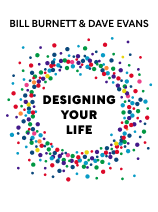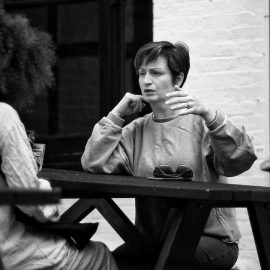

This article is an excerpt from the Shortform book guide to "Designing Your Life" by Bill Burnett and Dave Evans. Shortform has the world's best summaries and analyses of books you should be reading.
Like this article? Sign up for a free trial here .
What is life mind mapping? How can it help you remove blocks from your life?
A mind map is a technique to generate new ideas. If you feel stuck, you can use this method to explore options for your future, whether at home or at work.
Read more to learn how to create a life mind map to get unstuck.
Generating Ideas for Your Life
You can remove blocks from your life by combining your Wayfinding Journal with the technique of life mind mapping to envision multiple options.
Defective belief: I’m blocked.
- Corrected belief: I can always generate new ideas, so I’m never blocked.
Defective belief: I have to come up with the single right idea.
- Corrected belief: I need multiple ideas so that I can explore multiple options for my life and future.
We all get stuck or blocked sometimes in life. We want to make a change, but we can’t figure out what to do, let alone how to do it. For example, you may feel stuck in the wrong job and blocked in your attempts to find new work. Maybe you feel like you picked the wrong college major, and now you’re too far down the road to change. What you need in such a situation is ideation: the skill and act of generating ideas. Approaching your blocks with a design mindset can generate more ideas than you ever thought possible.
Two Principles of Life Design
To be an effective life designer, follow two principles:
- When you have many good ideas to choose from, you choose better.
- You should never choose the first possible solution to your problem.
Remember what you learned in this book’s introduction: There is no single best plan for your life. A successful, happy, productive “you” could take many possible forms. Moreover, there are different paths to each of those lives. So this adds up to a multitude of possibilities. And that’s where design thinking excels.
Designers thrive on ideas. They think broadly, even wildly, and they come up with as many ideas as they can. They achieve quality in ideation by vastly expanding the quantity of their ideation. Put differently, they get more good ideas simply by training themselves to have more ideas.
They also train themselves not to be fooled, when they’re working on a problem, by the first ideas that suggest themselves. These first ideas can often seem seductively persuasive, but you should always remember not to fall in love with them. The really creative solutions are almost always the later ones.
Enhanced Ideation
We’re all born with a creative bent. You can see it in the unself-conscious playing of children, who sing, draw, and dance with abandon. They don’t care if they “look foolish” or “do it wrong.” Self-consciousness comes later when you realize you’re being criticized or held to external standards. This kills creativity. But it’s still there inside you, and you can access it through simple tools and techniques such as life mind mapping and reframing entrenched problems.
Life Mind Mapping
Life mind mapping is a way that you can ideate on your own, without a team, and it can help you get unblocked. It works by free associating with words and ideas and generating a visual map of their relationships (a mind map is typically the “bubble mind map” of connected circles and words). Because it’s visual, it gets past your possible inner “censor” based on verbal logic.
The three steps in mind-mapping are:
- Choose your topic. Pick a current problem or goal, something that’s bothering you or dominating your mind or emotions. Write it in the center of a sheet of paper.
- Make your map. Write five or six words in a ring around the central topic word, generating them through free association. What does the central topic make you think of? Connect these words to the central topic with lines. Then create yet another “layer” by doing the same free association with each of the second-level words. If you want, you can add another layer after this. Let the exercise uncover words and ideas you didn’t even know were lurking in your subconscious.
- Draw connections and generate concepts. From the outermost layer of your map, circle four or five items that seem the most intuitively interesting to you. Start playing with these and “mashing them up” to generate solutions to your problem. Reject no ideas out of hand. Be playful with this.
Using Life Mind Mapping With Your Wayfinding Journal
Use your Wayfinding Journal to give you the topics for your life mind maps. From your journal, pick something that you found intensely involving, and draw a mind map with it at the center. Do the same for something that energized you, and also for something that generated the experience of flow. For one of these maps, pick three items from the outer ring (making sure they’re ones that intuitively excite you), and use them to make a potential job description that would help other people and that you’d find enjoyable and interesting. Now draw a sketch of this job. Do the same with your other two life mind maps. Make sure you come up with three completely separate job descriptions.
It doesn’t matter if any of these “solutions” sound realistically doable. The point is to unfreeze your thoughts and get your ideas flowing. When you learn to creatively combine ideas without stifling any of them, you have adopted the mindset of a designer.

———End of Preview———
Like what you just read? Read the rest of the world's best book summary and analysis of Bill Burnett and Dave Evans's "Designing Your Life" at Shortform .
Here's what you'll find in our full Designing Your Life summary :
- Why finding your "true passion" in life is a myth
- The five mental attitudes in design thinking
- How to design a meaningful life in which you can truly thrive






